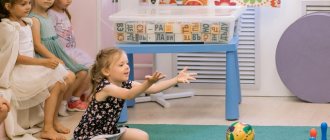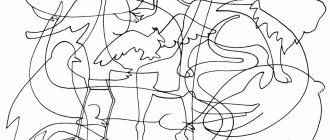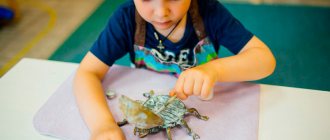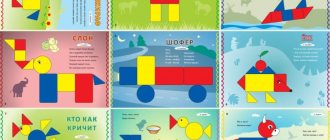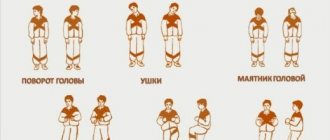All little children love to play. The game in their life is of great interest and occupies an even greater role than the reality around them. Just at the mere memory of an interesting game, the kids’ eyes begin to light up, and they look forward to further developments. Thanks to the game, any child feels more confident; he is not afraid to try his hand at solving any problems or issues. It is here that he himself can create his own world and be a full and self-sufficient participant in it. In adulthood, a small person cannot yet understand all the abundance of problems and subtleties that adults are already ready for.
It is in order to best influence the development of a child’s personality, strengthen his self-confidence, and develop good mental abilities, it is necessary to pay attention to correctional and developmental games. In addition, it is not for nothing that many teachers have proven that parental education of a child is more effective when it is accompanied by home educational games.
In preschool institutions, play is a significant part of the entire daily routine. Children play not only before and after meals, but also during the learning process. The advantage of kindergartens in the full development of a child is that educators have the opportunity to use new educational games that parents may not yet know about.
The role and main functions of correctional and developmental games
Corrective and developmental games play a special role in speech therapy activities, since due to them, problems with a child’s speech defects appear much less frequently and are corrected much faster. It should also be noted that correctional games for preschool children have many positive qualities:
- A small child, not realizing the problems in his speech, will never want to correct them under the influence of strict instructions and demands. At the same time, correctional and developmental games in an involuntary form relieve the baby from various speech therapy problems;
- To force a child to repeat boring and not always interesting tasks countless times to develop correct pronunciation, a teacher cannot do without correctional and developmental games.
Research has shown that these days there has been an increase in the number of children who not only pronounce individual sounds incorrectly, but also have a small vocabulary, violate the placement of words in elementary phrases, and also cannot express their own thoughts in the form of a complex sentence. Many people believe that the reason for this is the insufficient number of tasks for the development of fine motor skills. In addition, such children most often cannot concentrate on one process for a long time; they have problems with normal thinking and memory. As a result of this, girls and boys with pronunciation defects lag behind in general development, they have vocal, facial and emotional insufficiency. There are often cases when a child withdraws into himself, becomes inhibited, and reacts sharply to statements made in his direction. This happens because the baby understands that he speaks differently, not like his peers. As experts note, speech defects manifest themselves not only in the incorrect pronunciation of sounds, the problem also lies in the understanding, perception and reproduction of speech.
Thanks to new educational games, a speech therapist can determine the true cause of problems with normal speech. In this case, correctional and educational games are used to correct incorrect sounds. At the same time, all correctional games for children are complicated by psychological and lexical-grammatical exercises to achieve maximum effect.
Hyperactivity - what is it?
Hyperactivity is not a behavioral problem, not “promiscuity,” as many people think.
This is a medical diagnosis that can only be made by a specialist. Hyperactivity is based on dysfunction of the brain. It is important to distinguish a child who is restless and active from a child who is hyperactive.
Hyperactive children often experience restless movements in the hands and feet. They may get out of their seat during class, constantly spin and twirl, and cannot play calmly. They are chatty and answer a question without listening to the end. First they do, and then they think. Impulsive, explosive, overly distracted - that's all about them.
Hyperactivity prevents children from making progress and establishing warm, trusting relationships with people. They cause irritation among peers, and sometimes even among teachers. Without a doubt, these children need help, participation and patience from adults. You can read more about hyperactivity here.
The need for corrective games for children
- In the process of such activities, the child feels more comfortable and relaxed, without suppressing his emotional sphere;
- They provide an opportunity to increase speech motivation;
- Special new educational games can eliminate deficiencies in phonemic sound;
- The baby’s mental state begins to improve and gradually returns to normal;
- Gradually, problems with incorrect pronunciation disappear as the necessary speech tasks are performed with a large number of repetitions.
Today, correctional and educational games are one of the most effective methods of combating incorrect pronunciation.
Freeze and die and 14 more games for fidgets
If a child rushes around the apartment without stopping, screams in a voice that is not his own, rolls on the floor, makes chaotic movements with his arms and legs and does not hear at all what you say to him - catch him, hug him and in a quiet voice offer to play:
1. Ask your child to remember how a cow, frog, or dog screams. Or show your hand, nose, knee. Ask an older child to count from 1 to 20, and then from 20 to 12. Freeze and die. There are many variations of this game. For example, on the command “Day” the child jumps and plays. And on command “Night” pretends to be asleep. Or let the baby imagine that he is a mouse and runs and plays until you say “The cat is coming!” Instead of a verbal command, you can give a sound command - clap your hands or ring a bell. With older children, play “The Sea Is Troubled”
3. Calm storm. A variation of the previous game. It does not require complete freezing, but “calm” is quiet, smooth movements, a whisper. I don’t think there is any need to explain what a storm is4. Agree with your baby that as soon as you press on his nose, he will immediately “turn off.” You can expand on this idea by drawing a remote control (or use an unwanted TV remote). Press the button on the remote control and say: “reducing the volume (turning off the sound, turning on slow motion).” Let the child follow commands5. Invite your child to imagine that he is a tiger on the hunt. He must sit motionless in ambush for a long time, and then jump and catch someone. Or, together with your child, catch imaginary butterflies, which you need to slowly and very quietly creep up to. Under some playful pretext, hide together under the blanket and sit there quietly.6. Invite your child to imagine himself as a whale. Let him take a deep breath and dive into the depths. The whale can be given instructions to swim to different continents or look for something at the bottom.7. Ask your child to close his eyes (if he agrees, cover his eyes with a scarf) and sit still, waiting for a certain signal. For example, when the bell rings for the third time. Or ask your child to do something with his eyes closed (build a pyramid, put a car on the windowsill, collect cubes from the floor).8. Ask your child to perform a complex movement that requires concentration (run your finger through a drawn labyrinth, drive a car by a string between pins). Promise a prize for completion.
9. Try an exercise for alternating tension and relaxation. For example, you can move a sofa that is obviously too heavy to lift, and then fall and rest. Or invite your child to imagine that his and your palms are snowflakes. Let the snowflakes fall smoothly to the ground. And then take imaginary snow from the ground and forcefully clench your hands into fists (make snowballs). 10. Suggest a game. You say a word, and the child tries to pronounce this word louder than you. And then, on the contrary, ask the baby to speak more quietly than you. 11. Take a sheet or thin blanket and swaddle the “baby” tightly
The age of the child does not matter, but it is important that he likes this game. You can pick him up, rock him, sing a song.12
Take a napkin (or a piece of wood) and throw it up. Tell your child that while the napkin is falling, you need to laugh as loudly as possible. But as soon as it falls, you should immediately shut up. Play together with your child.13. It’s better to teach your child even when he’s still a baby that when you open your arms, he will run into your arms (I know, many parents do this). If this hug is pleasant, by 3-5 years the habit will remain. Therefore, spread your arms and when the child comes running to you, hug him tightly and hold the hug for a few seconds. 14. Encourage your baby to run and jump, but at the same time constantly perform some simple movement. For example, keep your index fingers connected or rotate your hand.15. Sew a bag the size of your palm and pour 3-4 tablespoons of sand or cereal into it. Invite your child to run, jump and have fun while holding this bag on his head. Promise him something nice (treat him with something, play or read) if the bag does not fall until the timer rings (depending on age, the time period is 1-5 minutes). Published by econet.ru
Progress of the game:
Children sit at tables, in front of each is a transparent vessel, to the right of it there are small objects on a small tray. The same items are on the teacher’s table. The teacher shows his fingers folded in a pinch, takes small objects and throws them into the vessel, drawing the children’s attention to the fact that he is holding the vessel with his other hand. Then he asks them to do the same. If necessary, the teacher individually shows how to fold fingers and how to grasp objects. After the children have collected all the objects with their right hand, they are poured onto a tray, which is moved to the left hand; now the child must throw the objects with his left hand and hold the vessel with his right.
MIRACLE - GEOMETRY
didactic game for practical identification of form and development of imagination
Target:
• Introduce children to basic geometric shapes.
• Teach the distinction of primary colors.
• Learn to compose a whole from different geometric shapes and their parts, selecting the ones you need through testing and trying on.
• Learn to see the shape in an object, to correlate the shape of the slot and the inlay.
• Develop fantasy and imagination.
Equipment:
Frame – liner with slots of geometric shapes made of soft material; various figures of primary colors made of the same soft material as the frame itself with holders for convenient arrangement of figures.
Progress of the exercise:
The teacher invites the children to play the game “Fun Pencil”
and with its help, complete the drawing of objects, outline drawings, letters, shade images of various objects, etc.
TETRIS
correctional exercise for the development of logical thinking
Target:
• Learn to correlate planar figures with a model and in practical action with objects.
• Learn to use the trial method, discarding erroneous options and fixing the correct ones.
• Develop logical thinking by putting figures in a certain order and in specially designated tabs.
Equipment:
Frame – liner with six windows; geometric shapes of rectangular and square shapes of various sizes and colors.
How to correct hyperreactivity using games?
Corrective measures are used to adapt hyperactive children to society. In activities that are often represented by games, children learn to control their emotions and movements. Group games help build interpersonal relationships
Classes train attention and memory. Although increased motor activity is observed with hyperactivity, experts still put the problem of attention deficit to the fore.
5 rules for conducting classes:
- Focus on developing one function at a time. For example, attention. Do not try to correct motor activity at the same time.
- The duration of one lesson should not exceed 30–45 minutes.
- Games need to be alternated: complex, requiring concentration, and active, relieving muscle tension.
- It is better to start classes individually, gradually introducing group games.
- Be restrained and patient, celebrate your child's successes. This will motivate him to new achievements.
Progress of the game:
Option 1: Children are given pyramids with caps. The teacher disassembles his pyramid and invites the children to do the same. Then he draws attention to the holes in the rings and shows how to put them on the rod. Children act by imitation: with one hand they hold the base of the pyramid, with the other (leading)
take the rings. The rings are strung in any order. If there are difficulties, the teacher helps using joint actions and a pointing gesture. When repeating the game, the position of the hands changes: the child holds the rod with the leading hand, and strings the rings with the other.
Option 2: Children are given two pyramids: one with a thick core and the other with a thin core. The rings of both pyramids are removed and mixed. Children must match the holes correctly to the correct rod. The teacher teaches how to make a choice by trial, each time correlating the size of the hole with the thickness of the rod.
Option 3: The material changes. Children are offered pyramids with compound rings of different sizes.
COLORFUL WORLD
didactic color perception game
Target:
• Develop a positive attitude towards the game and teach how to focus on color in the game as a significant feature.
• Learn to distinguish colors, focusing on their uniformity or heterogeneity when applied.
• Learn to denote the result with the words “such”
,
“not like that”
, teach to act by imitation.
• Learn to select the same colors by eye and then check.
Equipment:
Thick sheets of paper depict ornaments consisting of circles of different colors; colored plastic covers that match the colors of the ornament.
Board games
There are many good board games that can be used to develop a child with ADHD. A prerequisite for selecting board games for such a child is the absence of monotony. Finding board games that might interest a hyperactive child is not such an easy task. However, it is highly advisable for parents to make efforts in this direction.
First of all, the rules and conditions of board games are completely clear, not vague or controversial. As a result, this is a very good opportunity for a child to train attention. Since the moves in such a game are made in turns, the hyperactive child learns to wait and control his impulses
Board games are beneficial for a hyperactive child in many ways. For example, they teach such a child to follow certain rules and develop the ability for productive, goal-oriented activity.
Exercises and games with sand
Playing with sand relieves stress, develops psycho-emotional state, and develops fine motor skills.
Younger children can draw pictures and shapes on the sand, and older children can write the letters of words with a stick or finger.
How are sand games played?
At the first stage, children are introduced to the possibilities of sand, that it can be dry, and if you add water, it can be wet. You can rub it between your palms, squeeze it, sift it, make snakes and handprints, or depict animal tracks.
Children really love the game “Secret”; "Find the treasure." The presenter buries toys, shells, pebbles in the sand, and the child, with his eyes closed, touching the object, tries to find out what it is and where it is, without opening his fist, or simply digs it up.
Psychocorrectional games
Examples of psychocorrectional games
Uproar
Target:
development of concentration, development of auditory attention.
Conditions of the game.
One of the participants (optional) becomes the driver and goes out the door.
The group chooses a phrase or line from a song known to everyone, which is distributed as follows: each participant has one word. Then the driver enters, and the players all at the same time, in chorus, each begin to repeat their word. The driver must guess what kind of song it is by collecting it word by word. Note.
It is advisable that before the driver enters, each child repeats the word given to him out loud.
Mill
Target:
development of attention, control of motor activity.
Conditions of the game.
All players stand in a circle at a distance of at least 2 meters from each other.
One of the players receives the ball and passes it to another, who passes it to the third, etc. Gradually the transmission speed increases. A player who misses the ball or throws it incorrectly is eliminated from the game. The one who remains in the game last wins. Note.
The game can be complicated by having someone beat out a rhythm to which the players will throw the ball to each other, i.e. using auditory attention. In addition, this rhythm can change (sometimes faster, sometimes slower).
“Find the difference” (Lyutova E.K., Monina G.B.)
Target:
development of the ability to concentrate attention on details, development of visual attention.
Conditions of the game.
The child draws any simple picture (a cat, a house, etc.) and passes it to an adult, while he turns away.
The adult completes a few details and returns the picture. The child should notice that the drawing has changed. Then the adult and child can switch roles. Note.
The game can also be played with a group of children. In this case, the children take turns drawing a picture on the board and turning away (the possibility of movement is not limited). The adult completes the drawing. Children must say what changes have occurred.
Silence
Target:
development of auditory attention and perseverance.
Conditions of the game
.
The children are given instructions: “Let's listen to the silence. Count the sounds you hear here. How many are there? What sounds are these? (we start with the one who heard the least). Note.
The game can be complicated by giving children the task of counting sounds outside the room, in another class, on the street.
Cinderella
Target:
development of attention distribution.
Conditions of the game.
The game involves 2 people. There is a bucket of beans (white, brown and colored) on the table. On command, you need to disassemble and arrange the beans into 3 piles according to color. The one who completes the task first wins.
Beans or peas?
Target:
development of tactile attention, distribution of attention.
Conditions of the game.
The game involves 2 people.
There is a plate of peas and beans on the table. On command, you need to separate and arrange the peas and beans on two plates. Note.
In the future, the game can be complicated by blindfolding the players.
The most attentive
Target:
development of attention and visual memory.
Conditions of the game.
The participants of the game stand in front of the presenter in different poses (possible by topic: “Animals in the Zoo”, “Children on a walk”, “Professions”, etc.). The presenter must remember the order and poses of the players. Then the leader turns away. At this time, the players change places and change poses. The presenter must say who stood where.
Snowball
Target:
development of attention, memory, overcoming impulsiveness.
Conditions of the game.
The theme of the game is selected: cities, animals, plants, names, etc.
players sit in a circle. The first player names a word on a given topic, for example “elephant” (if the topic of the game is “Animals”). The second player must repeat the first word and add his own, for example, “elephant”, “giraffe”. The third says: “elephant”, “giraffe”, “crocodile”. And so on in a circle until someone makes a mistake. Then he drops out of the game and makes sure that the others do not make mistakes. And so on until there is only one winner left. Note
: In a similar way, you can come up with a “Detective”, putting together a plot one word at a time. For example: “Night”, “street”, “steps”, “scream”, “blow”, etc. You can allow children to prompt each other, but only using gestures.
It's boring to sit like this
Target:
development of attention.
Conditions of the game.
There are chairs along the opposite walls of the hall.
Children sit on chairs near one wall and read a poem: It’s boring, it’s boring to sit like this, still looking at each other. Isn't it time to go for a run and change places?
As soon as the poem is read, all the children run to the opposite wall and try to occupy the free chairs, which are one less than the number of participants in the game. The one who remains without a chair is eliminated. Everything is repeated until the winner takes the last remaining chair.
Don't miss the ball
Target:
development of attention
Conditions of the game.
The participants of the game stand in a circle and put their hands on each other’s shoulders. The driver stands in the middle of the circle, with a ball at his feet. The driver’s task is to kick the ball out of the circle. The players' task is not to release the ball. You can't separate your hands. If the ball flies over the hands or head of the players, the kick is not counted. But when the ball flies between the legs, the driver wins, becomes a player, and the one who missed the ball takes his place.
Siamese twins
Target:
control impulsivity, flexibility of communication with each other, promote the emergence of trust between them.
Conditions of the game.
Children are given instructions: “Get into pairs, stand shoulder to shoulder, hug each other with one arm around the waist, place your right leg next to your partner’s left leg.
Now you are conjoined twins: two heads, three legs, one torso and two arms. Try walking around the room, doing something, lying down, standing up, drawing, jumping, clapping your hands, etc.” Notes
In order for the “third” leg to act together, it can be fastened with either a rope or an elastic band. In addition, twins can “grow together” not only with their legs, but with their backs, heads, etc.
Bears and cones
Target:
endurance training, impulse control.
Conditions of the game.
Cones are scattered on the floor.
Two players are asked to collect them with the paws of large teddy bears. The one who collects the most wins. Notes
Instead of toys, you can use the hands of other players, but, for example, turned with the back of your hand. Instead of cones, you can use other objects - balls, cubes, etc.
“Speak” (Lyutova E.K., Monina G.B.)
Target:
impulse control.
Conditions of the game.
The children are given instructions: “Guys, I will ask you simple and complex questions. But it will be possible to answer them only when I give the command - “Speak”! Let's practice: “What time of year is it now?” (pause). “Speak!” “What color is the ceiling in our classroom?” “Speak!” “What is two plus two?” “Speak!” “What day of the week is it today?” “Speak!” Etc
Push - Catch
Target:
development of attention, control of motor activity.
Conditions of the game.
Children are divided into pairs, each pair has a ball. One sits, the other stands at a distance of 2-3 meters. The person sitting pushes the ball to his partner, quickly stands up and catches the ball thrown to him. After several repetitions, players change places.
Pass the ball
Target:
development of attention, control of motor activity.
Conditions of the game.
Children are divided into 2 equal groups, stand in 2 columns and, at a signal, pass the ball. The last one standing in each column, having received the ball, runs, stands in front of the column and passes the ball again, but in a different way. The game ends when the line leader is in front with the ball. Passing options:
- above the head;
- right or left (you can alternate left-right);
- down between the legs.
Note.
All this can be done to energetic music.
Storks - frogs
Target:
attention training, control of motor activity.
Conditions of the game.
All players walk in a circle or move around the room in a free direction.
When the leader claps his hands once, the children should stop and take the “stork” pose (stand on one leg, arms to the sides). When the presenters clap twice, the players take the “frog” pose (sit down, heels together, toes and knees to the sides, hands between the feet on the floor). After three claps, the players resume walking. Note
: You can come up with other poses, you can use a much larger number of poses - this makes the game more complicated. Let the children come up with new poses themselves.
Broken phone
Target:
development of auditory attention.
Conditions of the game.
The game involves at least three players. A verbal message consisting of one to several words is transmitted by the players to each other in a circle (whispering, in the ear) until it returns to the first player. You cannot repeat the transmitted word or sentence to your neighbor if he did not hear it. Then the received message is compared with the original one and the player who distorted it is found.
Let's play with objects
Target:
development of attention, its volume, stability, concentration, development of visual memory.
Conditions of the game.
The presenter selects 7-10 small items.
- Place the items in a row and cover them with something. After opening them slightly for 10 seconds, close them again and invite the child to list all the items.
- Again briefly show the child the objects and ask him in what order they were placed.
- After swapping two objects, show all objects again for 10 seconds. Invite the child to figure out which two objects are rearranged.
- Without looking at the objects anymore, say what color each of them is.
- Having placed several objects one on top of the other, ask the child to list them in a row from bottom to top, and then from top to bottom.
- Divide items into groups of 2-4 items. The child must name these groups.
Note
. These tasks can be further varied. You can play with one child or with a group of children. You can start with a small number of objects (how many the child is able to remember will be evident from the first task), increasing their number in the future.
Games for preschool children (4-5 years old)
In this age category of children, you can already include games to develop one or another function.
Game “Say one, two, three!” The adult asks the children simple questions, but they can only be answered when they hear the command: “One, two, three - speak!” Questions could be: “Name your pet”; "What is color"; “What kind of toy is this?”
Study games are a very good way to relieve stress.
Game "Snowman". The child pretends to be a snowman - spreads his tense arms to the side, puffs out his cheeks. The adult portrays the sun, which warms and strokes the child. The snowman melts and slowly falls to the floor.
Game "Ball". Children represent themselves with colorful balloons. An adult depicts a pump, the movements of which inflate the balls. Then comes the clapping of hands, the balls burst and slowly fall to the floor.
Various games and exercises for attention “This is unnecessary”; “Find the differences in the picture”; "Touch a color or object"
Progress of the game:
The teacher shows the child the chickens, says that they came to visit them and want to be treated to grains. Since the chickens are very small, they are used to pecking grains from the palm, and the teacher suggests painting the grains on the palm and feeding the chickens. During the game, the teacher encourages and praises the child.
ZIPPER "
exercise to develop self-care skills
Target:
• Teach children how to fasten zippers.
• Development of manual skills.
• Developing self-care skills.
• Develop flexion and extension movements of the hands children
• Develop purposefulness of actions.
• Learn to distinguish colors, focus in the exercise on color as a significant feature.
Equipment: A thick sheet of cardboard is covered with fabric and has zippers sewn on it - zippers in different directions and different colors, sizes (long, short, wide and narrow, quality (iron or plastic)

